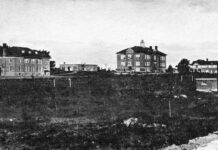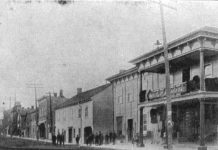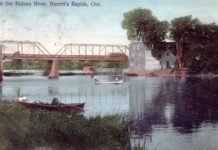It could have been called Doyleville, or even Bassville, but the hamlet of Bishop’s Mills was eventually named after the family that built the mills around which the settlement grew. The greater part of the hamlet of Bishop’s Mills lies in lot 3 of the Ninth Concession of the old Oxford-on-Rideau Township. The lot was first patented to Thomas Doyle, from Augusta Township, on September 29, 1803, but it was forfeited by him for non-payment of taxes and settlement dues in 1831, without ever being inhabited by Doyle, or anyone else.
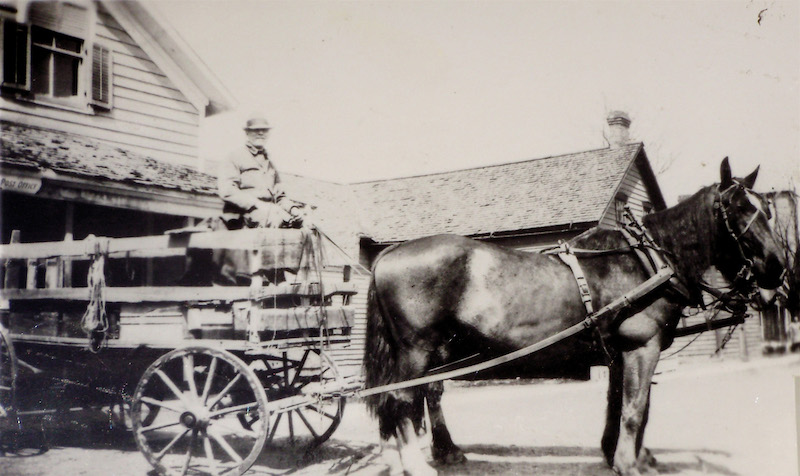
Joseph Bass bought the 200-acre lot that year for just over £40, basically the amount owing in taxes on the land. Bass did very well out of the deal. In 1846, he sold the 70 acres lying south of the Kemptville Road to Elisha Dakins for £125, and the northern 130 acres to Chauncey Bishop for £200: a very nice profit indeed.
Chauncey Bishop bought the east half of the adjoining lot 2, concession 9, in 1847 from the King’s College, now the University of Toronto. Lot 2 had been what was called a Clergy Reserve, that is, land that was set aside for the benefit of the Anglican Church in Canada. When leased, or sold, the proceeds would go towards the expenses of that church. It had first been settled by Jonathan Mills, from South Gower, who leased the land in 1805.
Chauncey sold part of his land to his brother, Ira, in 1852, and began the process of selling off half acre lots to new arrivals who settled around the crossroads, as the hamlet grew up around the saw, shingle and grist mills the Bishop brothers erected on their property. One of the small lots, about one acre in size, had been sold to Hezekiah Winslow, a shoemaker, in 1849. It was situated at the corner of the Kemptville Road and Mill Street, and sold for £6.5.0 (worth at that time about $26). By 1864, a quarter of that lot was bought by Moses Waldron for $600, so it is likely that Winslow had established a business at that spot in the previous decade.
It is an interesting fact that the crossroads were there before the hamlet. There was already a road running across lot 3 “commonly known as the Kemptville Road”, according to one deed from 1849, and one that linked that road to Burritt’s Rapids. This would later be known as Mill Street, when the Bishops had built their installation. Waldron was a merchant, and he opened his store at the crossroads in 1864. The building was featured in a drawing which appeared in “The History of Leeds and Grenville” in 1879. It still stands there today, and served as a store from Waldron’s day until 2002.
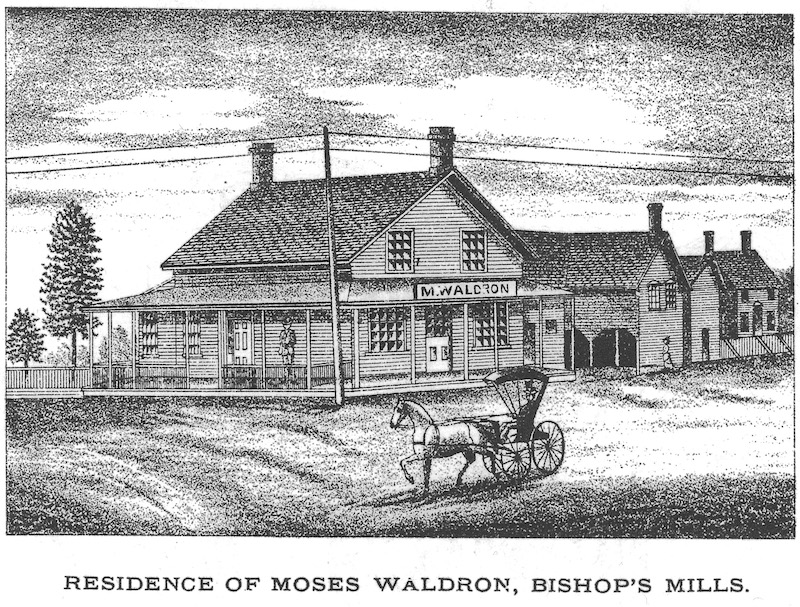

The Bishop’s Mills Post Office was located in Chauncey Bishop’s house from 1853 until 1878. In the short time I lived in the house, I can remember the letter box still existing in the wall of the summer kitchen. Sadly, it was demolished soon after. For many years, the Post Office was in the Moses Waldron store at the crossroads. The Nottell family acted as Post Masters for forty-one years; Mildred Adams, nee Nottell, being the last in that position when the office was closed in 1970, after serving for a quarter century.






